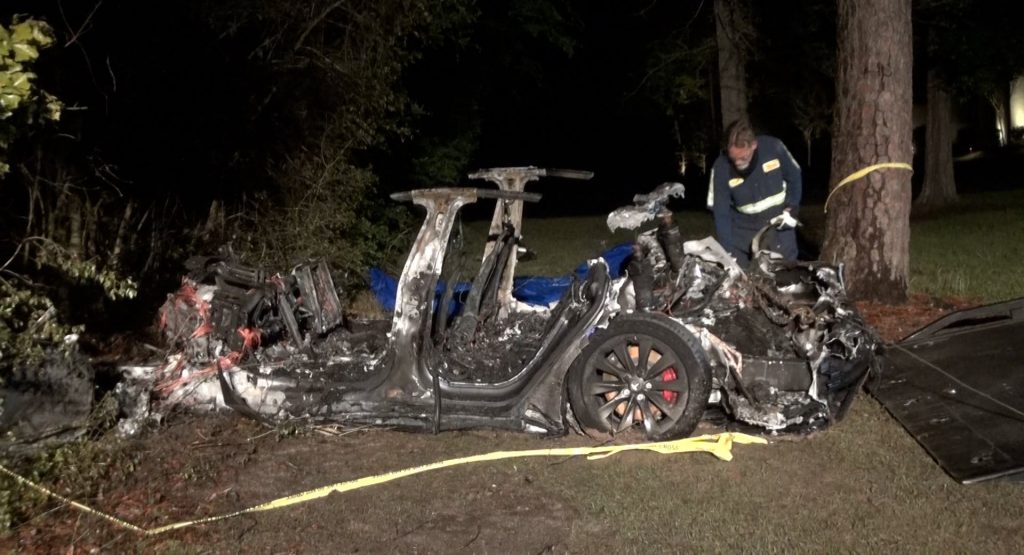The National Transportation Safety Board has released results of its preliminary investigation into a fatal Tesla Model S crash that occurred in Spring, Texas, in April.
Police state that the Model S veered off a road before hitting a tree and catching fire. Both occupants were killed and first responders were shocked when they apparently discovered that one of the two occupants was in the front passenger seat while the other was in the rear seat, suggesting that no one was driving.
In a preliminary report that was published this week, the NTSB revealed that home surveillance footage from outside the property of the Model S owner showed him and his friend getting into the driver’s seat and front passenger’s seat when they went on a quick joy ride in the electric vehicle.
Read More: No One Was Driving The Tesla Model S In Fiery Crash Where Two People Were Killed
The federal agency also reports that the Model S involved was equipped with Tesla’s available Autopilot system but in tests conducted using other 2019 Model S cars along the same piece of road where the crash occurred, it was not able to enable the Autosteer function of the system that keeps a car centered in its lane.
Shortly after the crash, the vice-president of vehicle engineering at Tesla, Lars Moravy, claimed that the steering wheel of the Model S was deformed, leading him to suggest that there was someone in the driver’s seat at the time of the crash. As the NTSB report is only preliminary, it has yet to determine what caused the crash and whether the driver misused any of the Tesla’s driver-assistance features.
“The NTSB continues to collect data to analyze the crash dynamics, postmortem toxicology test results, seat belt use, occupant egress, and electric vehicle fires,” the agency said. “All aspects of the crash remain under investigation as the NTSB determines the probable cause, with the intent of issuing safety recommendations to prevent similar crashes.”
It remains to be seen when the investigation will be completed by according to CNBC, fatal crash investigations often take between 12 and 24 months to complete.
Two men dead after fiery crash in Tesla Model S.
“[Investigators] are 100-percent certain that no one was in the driver seat driving that vehicle at the time of impact,” Harris County Precinct 4 Constable Mark Herman said. “They are positive.” #KHOU11 https://t.co/q57qfIXT4f pic.twitter.com/eQMwpSMLt2
— Matt Dougherty (@MattKHOU) April 18, 2021







